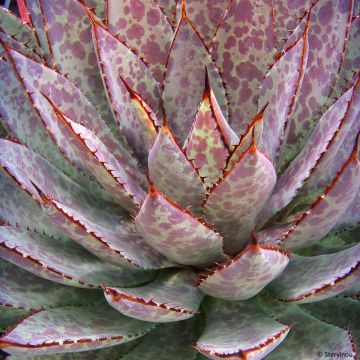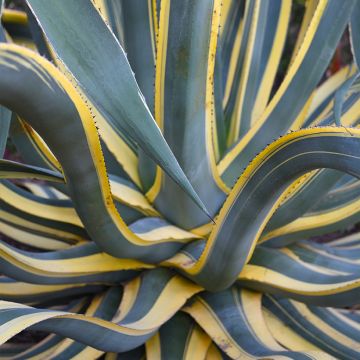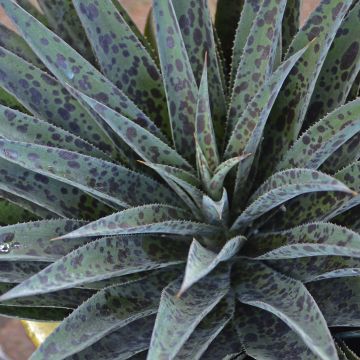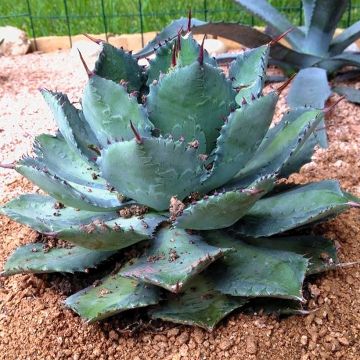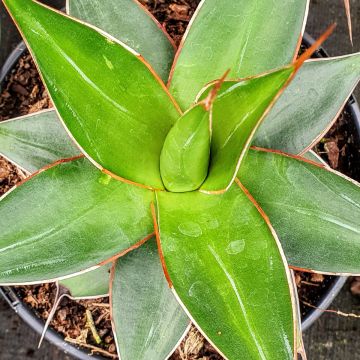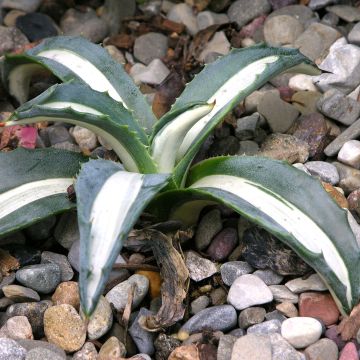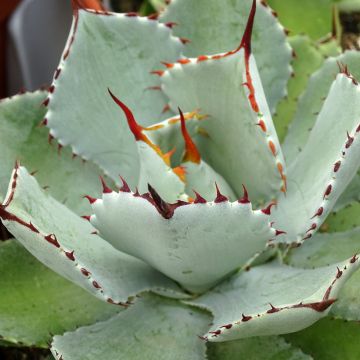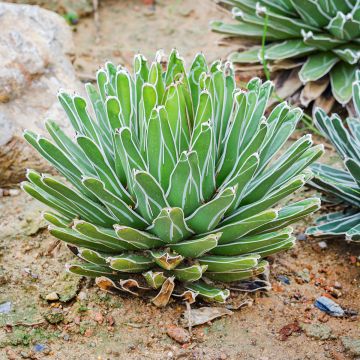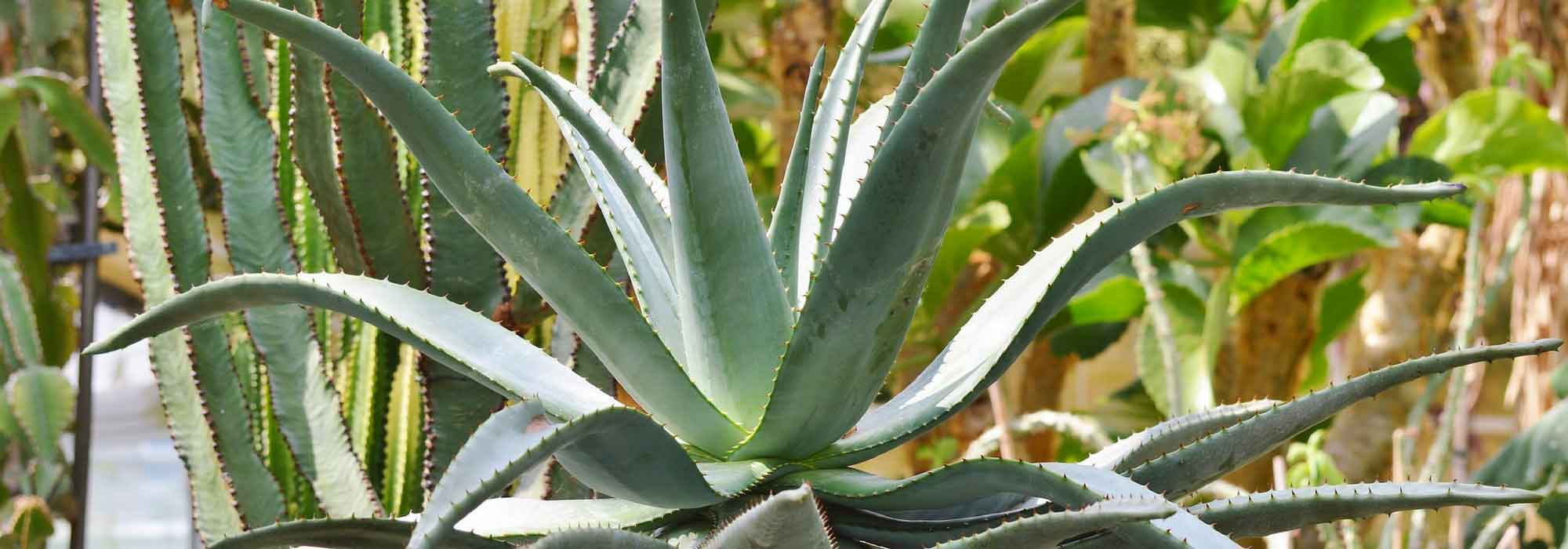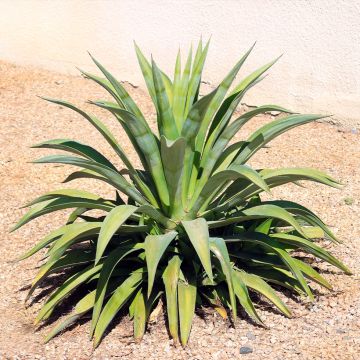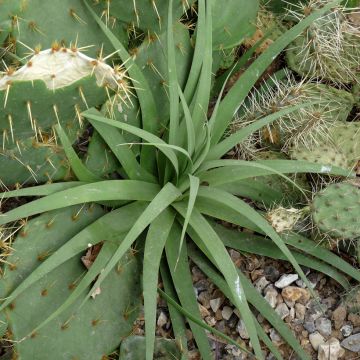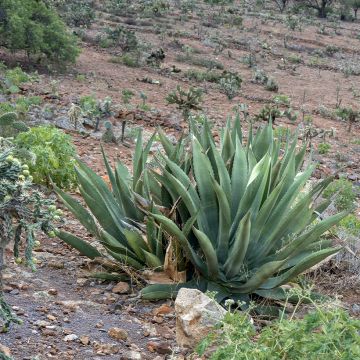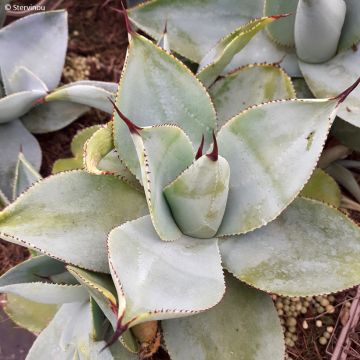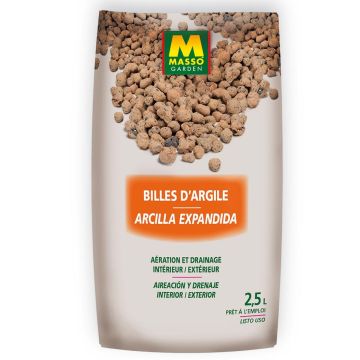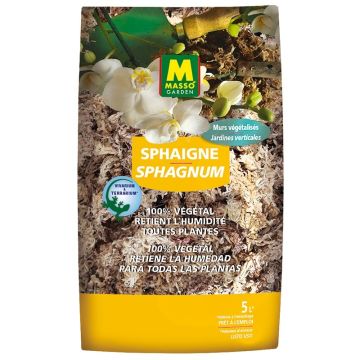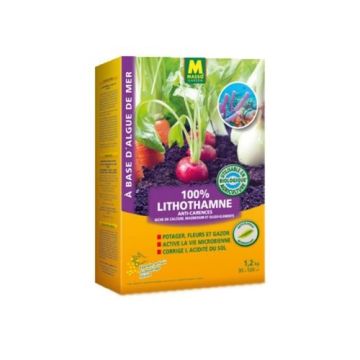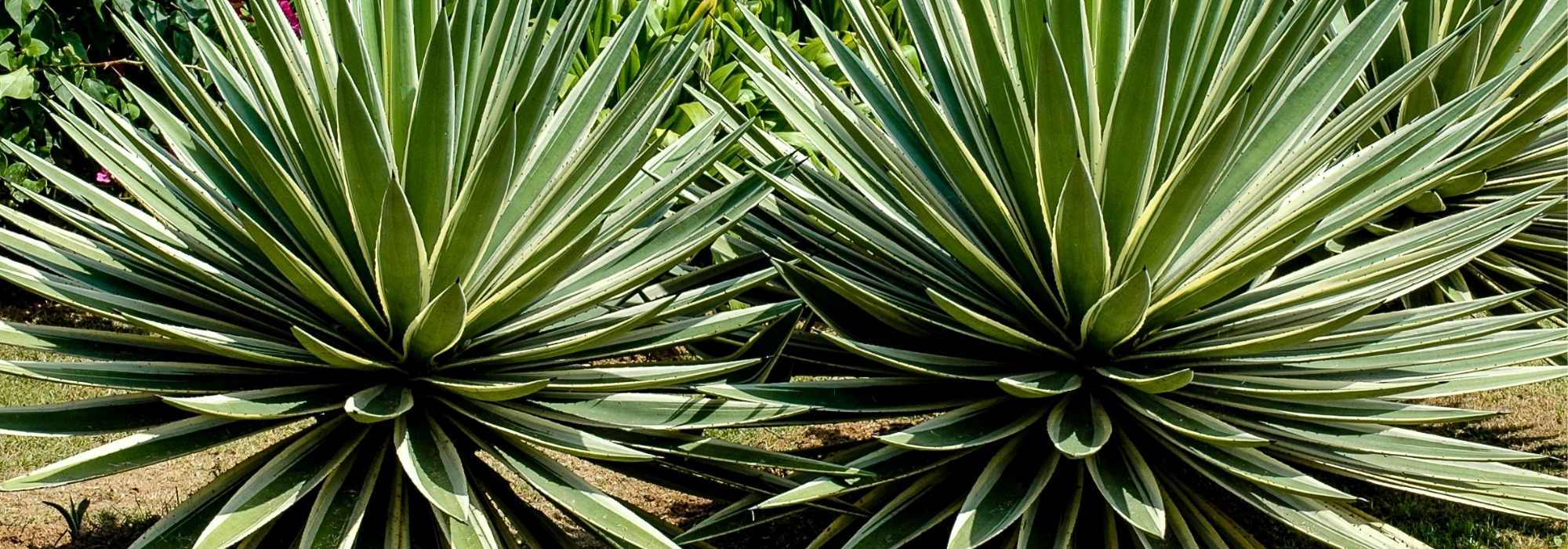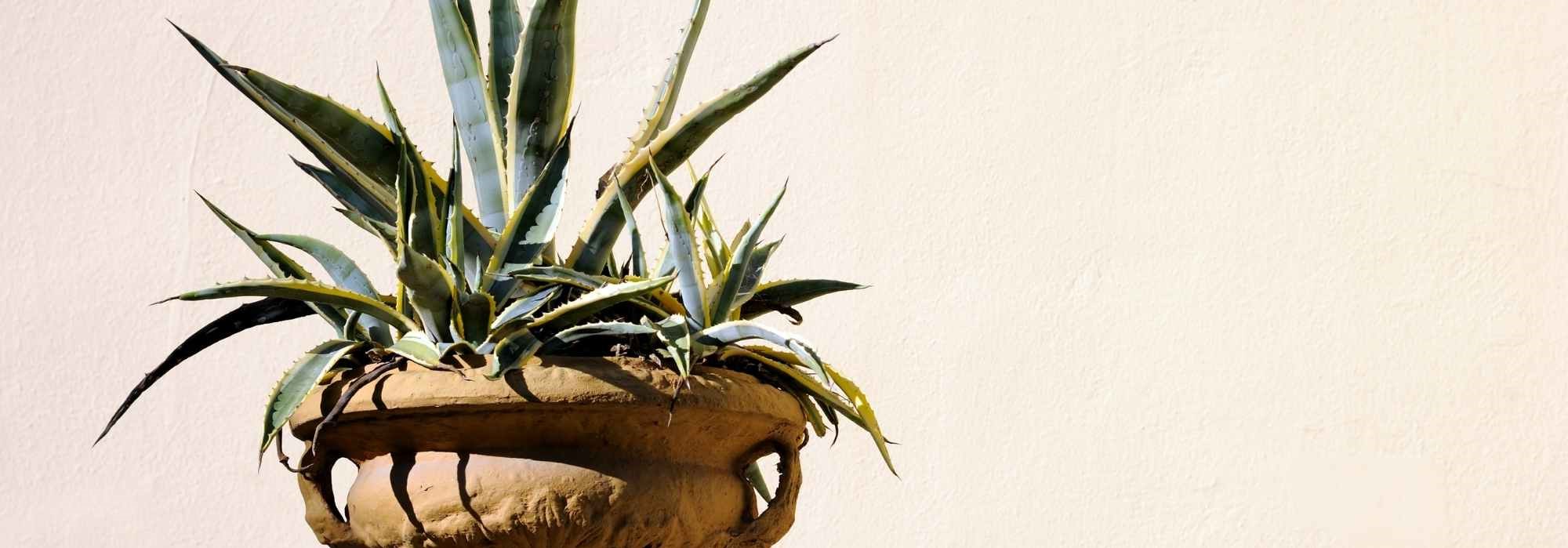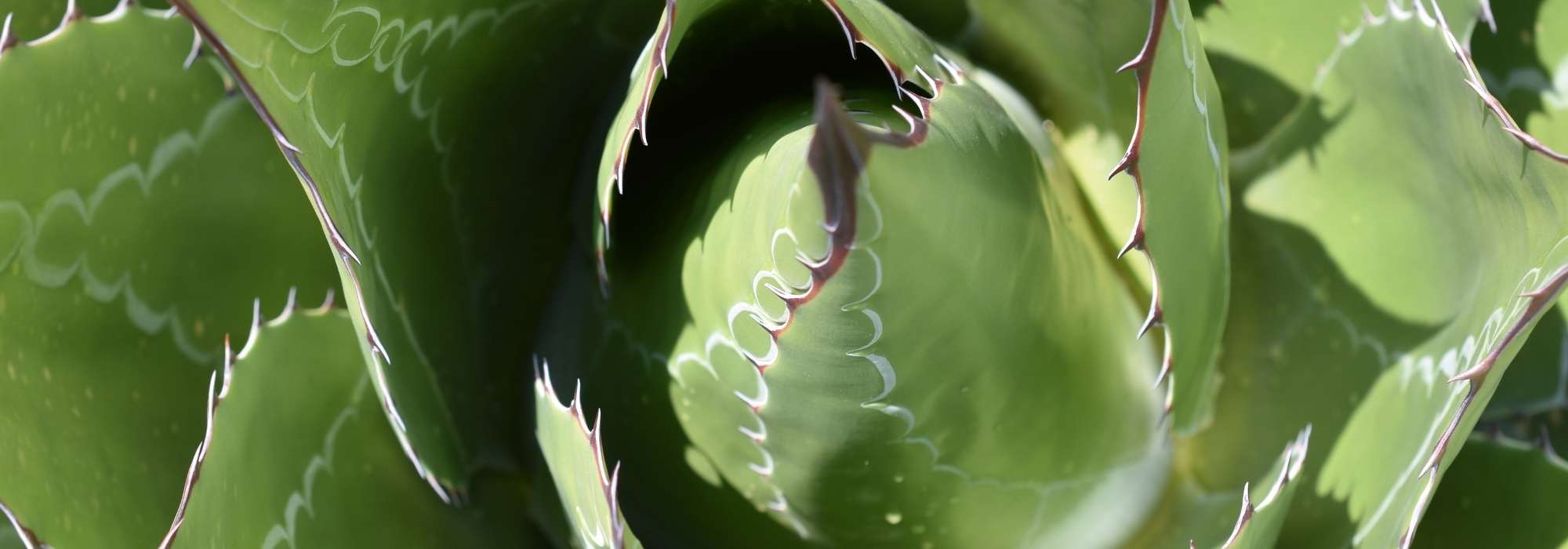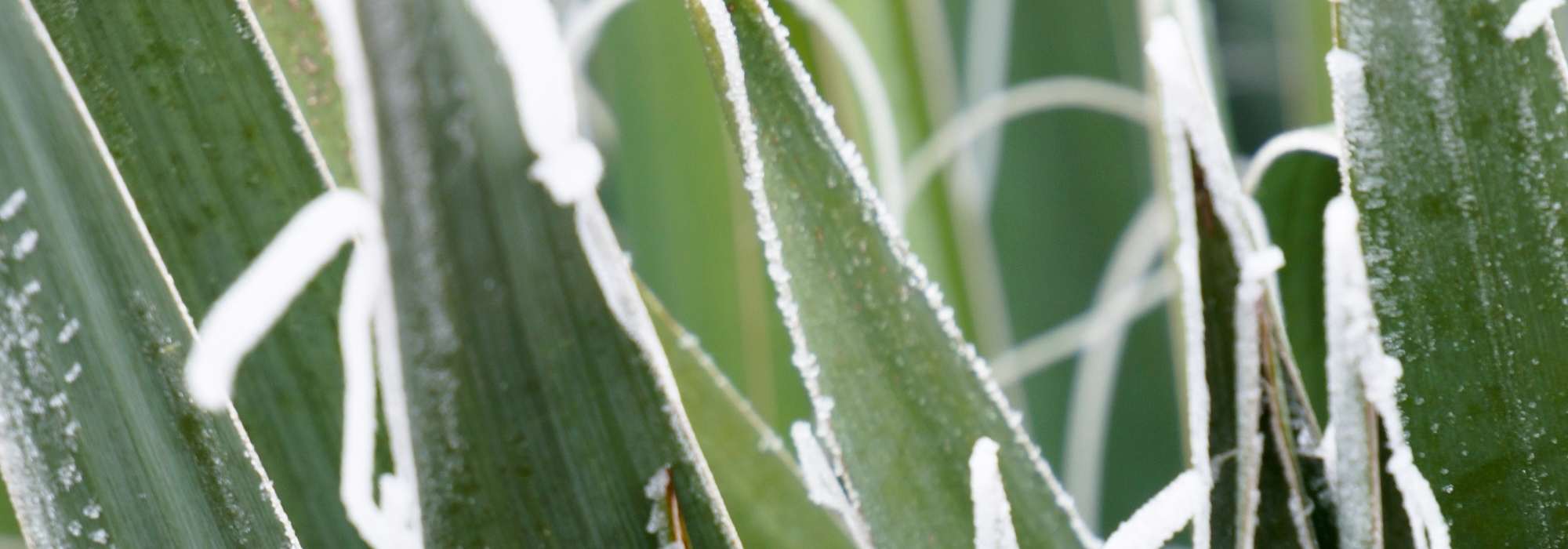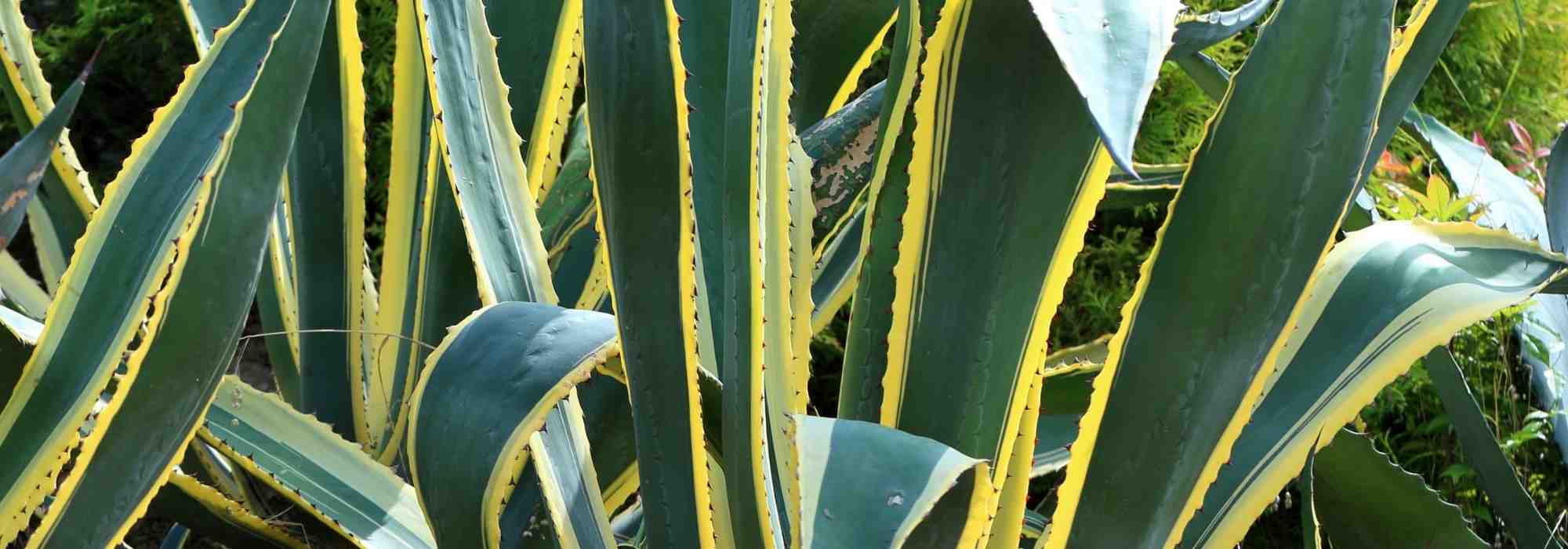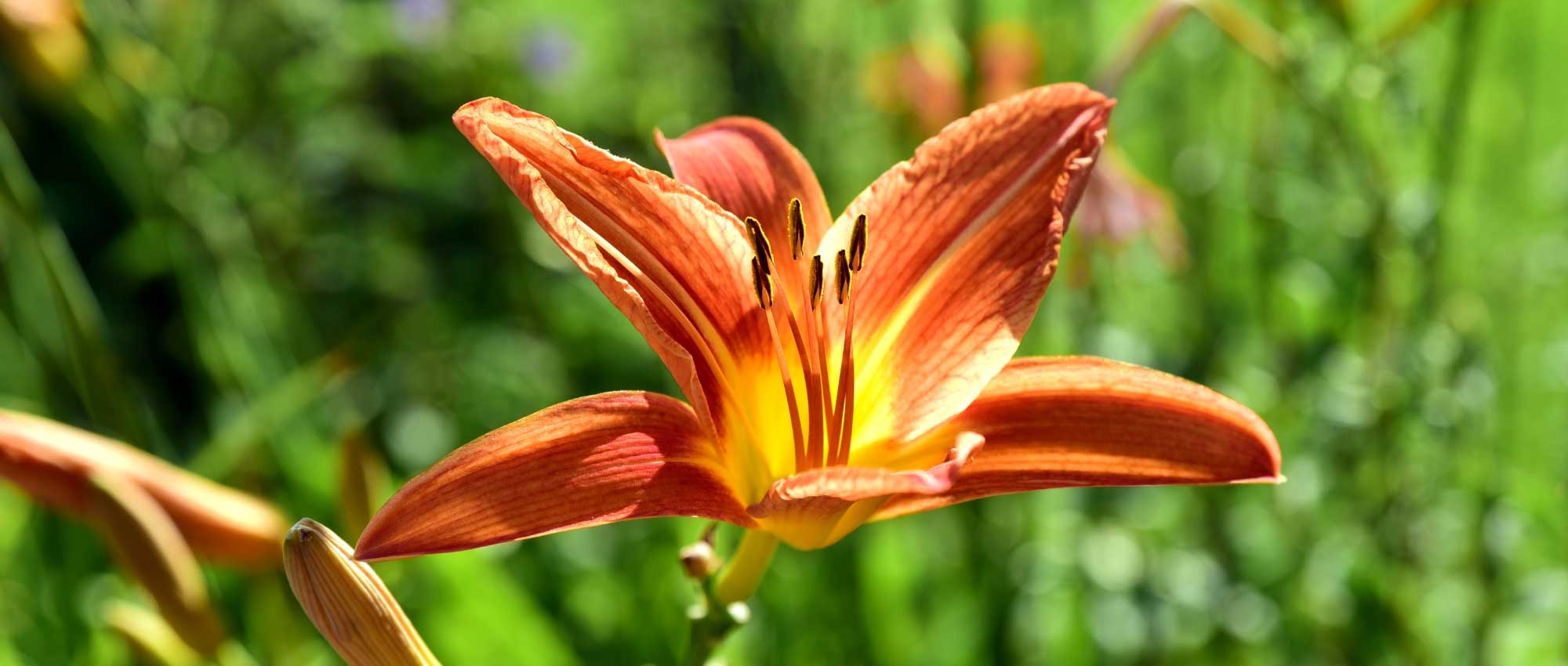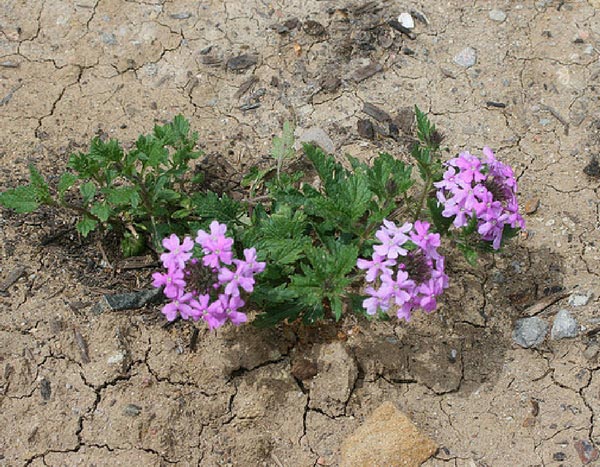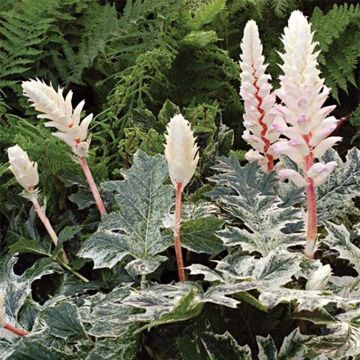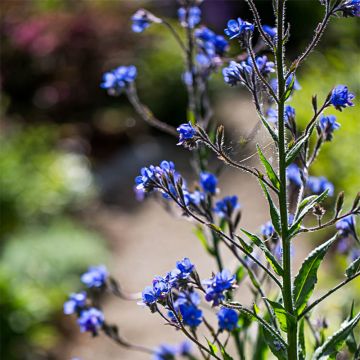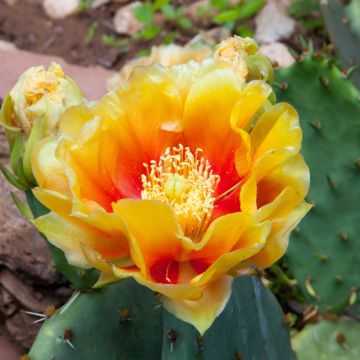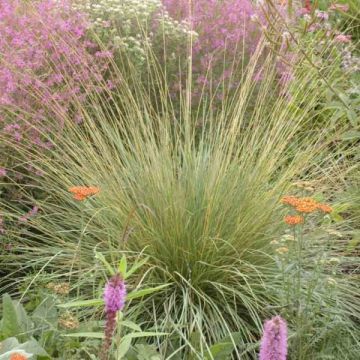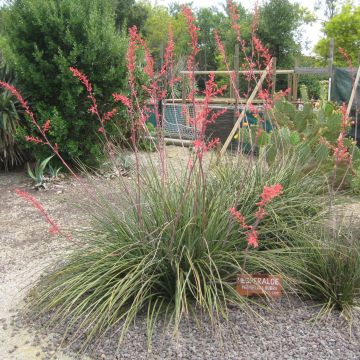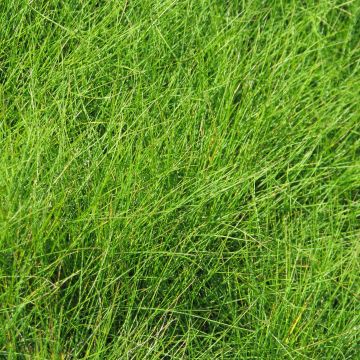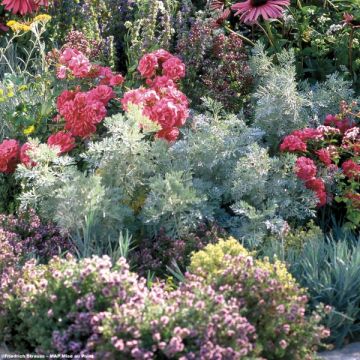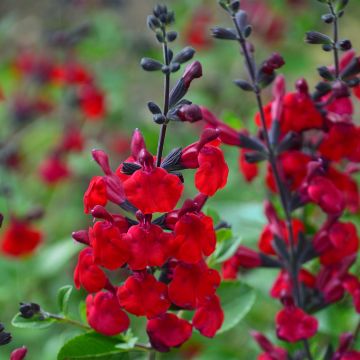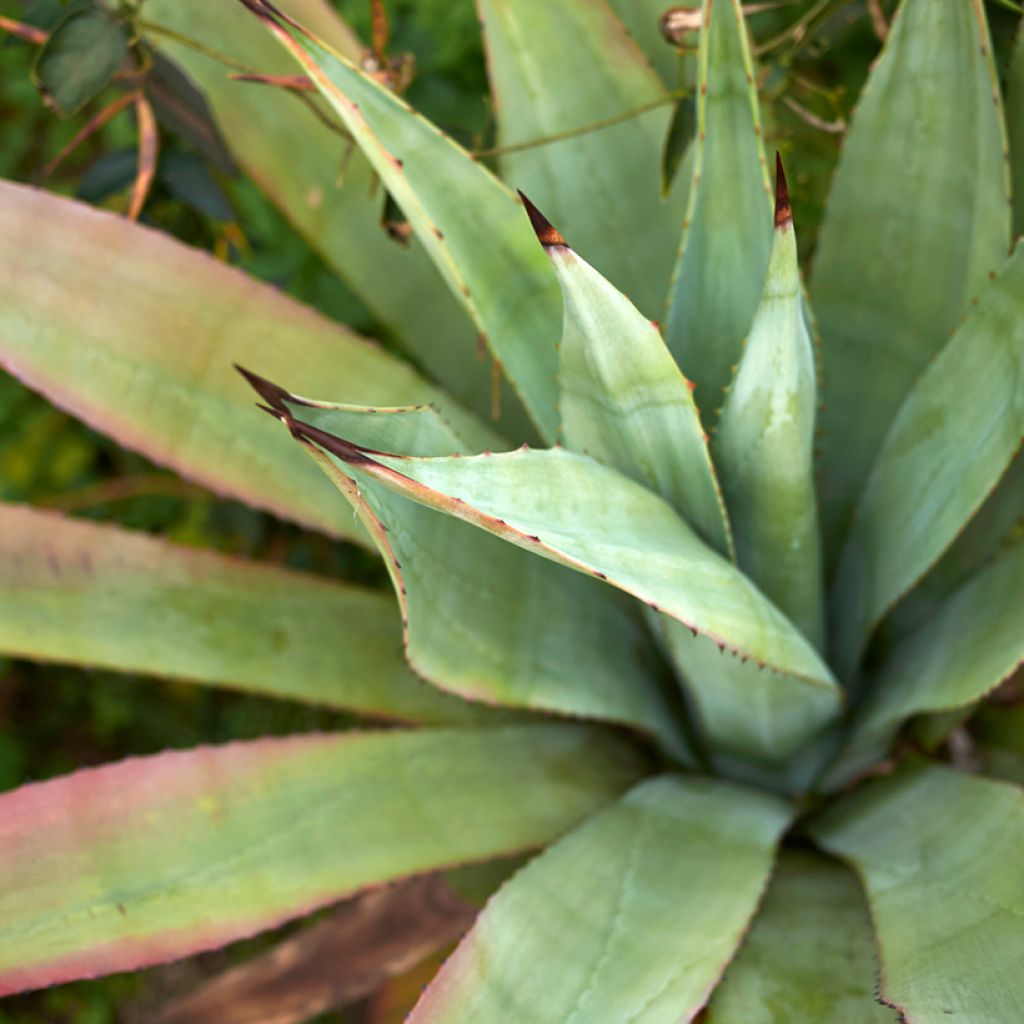

Agave x winteriana
Agave x winteriana
Agave americana x franzosinii Winteriana
Special offer!
Receive a €20 voucher for any order over €90 (excluding delivery costs, credit notes, and plastic-free options)!
1- Add your favorite plants to your cart.
2- Once you have reached €90, confirm your order (you can even choose the delivery date!).
3- As soon as your order is shipped, you will receive an email containing your voucher code, valid for 3 months (90 days).
Your voucher is unique and can only be used once, for any order with a minimum value of €20, excluding delivery costs.
Can be combined with other current offers, non-divisible and non-refundable.
Why not try an alternative variety in stock?
View all →This plant carries a 12 months recovery warranty
More information
We guarantee the quality of our plants for a full growing cycle, and will replace at our expense any plant that fails to recover under normal climatic and planting conditions.
Would this plant suit my garden?
Set up your Plantfit profile →
Description
Agave x winteriana is a hybrid between two botanical species and a highly ornamental plant, both sculptural and colourful. Its long, beautiful blue leaves are arranged in a large rosette, reaching up to two metres in diameter. They are pointed at their tips and adorned with small thorns along their edges. The plant easily produces offsets, creating small rosettes that allow it to gradually spread. The flowering of the mature rosette is impressive, rising several metres high. Perfectly suited to dry southern gardens in full sun, it is sensitive to frost below -6 to -8°C.
Once the flagship genus of the Agavaceae family, from which it derived its name, the Agave is now reclassified within the Asparagaceae, the family of edible and ornamental Asparagus, and many other genera that adorn gardens. There are several hundred species of Agaves, ranging from dwarf to giant, most often forming a rosette directly on the ground, but sometimes also borne on a trunk, often short but reaching up to 3 m in Agave decipiens.
Agave x winteriana is a hybrid resulting from the cross-breeding of A. americana and A. franzosinii. Native to Mexico, Agave americana is widespread in Mediterranean gardens, where it has been recorded since 1520! It is easily recognised by its large size, forming a rosette of 2.5 to 3 m in diameter when mature. This semelparous species flowers only once in its lifetime. The rosette dies after this intense effort but renews itself through the production of axillary rosettes throughout its life, giving it its invasive capacity.
Agave franzosinii is sometimes considered a hybrid of the former, particularly as it is unknown in the wild. It is distinguished, however, by its even bluer colour and exceptional dimensions, with a spread of 3.50 to 4 m. Its silhouette is also different, as its leaves are not stiff but curved downwards, with a striking red terminal thorn that contrasts beautifully. This species produces offsets just as much as A. americana, but it is much less common on the Mediterranean coast.
Agave x winteriana displays a striking architectural appearance, with a habit intermediate between its two parents. Its leaves are more flexible in appearance than those of A. americana, gracefully curved in a subtle S-shape. Their bluish colour is similarly midway between the two parents, ending in a short greyish-red tip and finely toothed along their entire perimeter. Its dimensions are smaller, as it reaches about 1.50 m in height and 2 m in spread at maturity, making it still a large variety within the Agave group. It produces fewer offsets than its parents, though it regularly forms secondary rosettes. The plant eventually forms a small colony if they are not partially removed. Therefore, sufficient space must be allocated for this agave. After about fifteen years, the main rosette produces a flower spike that shoots up from the centre to a height of 5 to 7 m. It is branched and bears clusters of dozens of pale yellow flowers, 7 to 10 cm long, standing upright. The eye-catching flowering lasts all summer in the garden and eventually exhausts all the reserves of the rosette, which then dies but perpetuates itself through its lateral rosettes.
A little less hardy than its parents, Agave x winteriana can withstand frosts of around -6 to -8°C, making it suitable for planting without issue in the south and in the mildest, driest areas of the Atlantic coast. Moisture is its enemy. Elsewhere, it will need to be grown in a very large pot, which will be difficult to move to shelter it from the cold in winter. It would be preferable to opt for a smaller species, such as the superb Butterfly Agave (Agave isthmensis), with its bluish foliage, which does not exceed 60 cm at maturity. In the south, your Agave x winteriana will form the backbone of a dry bed, where you can plant Prickly Pear Cacti (Opuntia), for example. At their base, plant a carpet of Delosperma, perennial purslanes with star-shaped flowers, whose range of colours continues to expand with new cultivars, and which are unparalleled in brightening up a bed.
Flowering
Foliage
Plant habit
Botanical data
Agave
americana x franzosinii
Winteriana
Asparagaceae
Cultivar or hybrid
Other Agave
View all →Planting and care
Plant Agave x winteriana in full sun, in preferably poor soil, even stony, chalky, sandy, and most importantly well-drained. It dislikes winter moisture and cold, while it tolerates dry soils in summer perfectly. In young plants, the foliage can be damaged at -6°C, while well-established mature plants will withstand brief frosts of around -8°C in dry soil. As the plant becomes quite big, in cold regions it should be grown in very large pots, preferably terracotta or wooden planters. It should be stored in winter in a spacious conservatory or cold greenhouse, protected from severe frosts, to be brought outdoors during the warmer season. Watering should be reduced in winter.
Planting period
Intended location
Care
Planting & care advice
This item has not been reviewed yet - be the first to leave a review about it.
Similar products
Haven't found what you were looking for?
Hardiness is the lowest winter temperature a plant can endure without suffering serious damage or even dying. However, hardiness is affected by location (a sheltered area, such as a patio), protection (winter cover) and soil type (hardiness is improved by well-drained soil).

Photo Sharing Terms & Conditions
In order to encourage gardeners to interact and share their experiences, Promesse de fleurs offers various media enabling content to be uploaded onto its Site - in particular via the ‘Photo sharing’ module.
The User agrees to refrain from:
- Posting any content that is illegal, prejudicial, insulting, racist, inciteful to hatred, revisionist, contrary to public decency, that infringes on privacy or on the privacy rights of third parties, in particular the publicity rights of persons and goods, intellectual property rights, or the right to privacy.
- Submitting content on behalf of a third party;
- Impersonate the identity of a third party and/or publish any personal information about a third party;
In general, the User undertakes to refrain from any unethical behaviour.
All Content (in particular text, comments, files, images, photos, videos, creative works, etc.), which may be subject to property or intellectual property rights, image or other private rights, shall remain the property of the User, subject to the limited rights granted by the terms of the licence granted by Promesse de fleurs as stated below. Users are at liberty to publish or not to publish such Content on the Site, notably via the ‘Photo Sharing’ facility, and accept that this Content shall be made public and freely accessible, notably on the Internet.
Users further acknowledge, undertake to have ,and guarantee that they hold all necessary rights and permissions to publish such material on the Site, in particular with regard to the legislation in force pertaining to any privacy, property, intellectual property, image, or contractual rights, or rights of any other nature. By publishing such Content on the Site, Users acknowledge accepting full liability as publishers of the Content within the meaning of the law, and grant Promesse de fleurs, free of charge, an inclusive, worldwide licence for the said Content for the entire duration of its publication, including all reproduction, representation, up/downloading, displaying, performing, transmission, and storage rights.
Users also grant permission for their name to be linked to the Content and accept that this link may not always be made available.
By engaging in posting material, Users consent to their Content becoming automatically accessible on the Internet, in particular on other sites and/or blogs and/or web pages of the Promesse de fleurs site, including in particular social pages and the Promesse de fleurs catalogue.
Users may secure the removal of entrusted content free of charge by issuing a simple request via our contact form.
The flowering period indicated on our website applies to countries and regions located in USDA zone 8 (France, the United Kingdom, Ireland, the Netherlands, etc.)
It will vary according to where you live:
- In zones 9 to 10 (Italy, Spain, Greece, etc.), flowering will occur about 2 to 4 weeks earlier.
- In zones 6 to 7 (Germany, Poland, Slovenia, and lower mountainous regions), flowering will be delayed by 2 to 3 weeks.
- In zone 5 (Central Europe, Scandinavia), blooming will be delayed by 3 to 5 weeks.
In temperate climates, pruning of spring-flowering shrubs (forsythia, spireas, etc.) should be done just after flowering.
Pruning of summer-flowering shrubs (Indian Lilac, Perovskia, etc.) can be done in winter or spring.
In cold regions as well as with frost-sensitive plants, avoid pruning too early when severe frosts may still occur.
The planting period indicated on our website applies to countries and regions located in USDA zone 8 (France, United Kingdom, Ireland, Netherlands).
It will vary according to where you live:
- In Mediterranean zones (Marseille, Madrid, Milan, etc.), autumn and winter are the best planting periods.
- In continental zones (Strasbourg, Munich, Vienna, etc.), delay planting by 2 to 3 weeks in spring and bring it forward by 2 to 4 weeks in autumn.
- In mountainous regions (the Alps, Pyrenees, Carpathians, etc.), it is best to plant in late spring (May-June) or late summer (August-September).
The harvesting period indicated on our website applies to countries and regions in USDA zone 8 (France, England, Ireland, the Netherlands).
In colder areas (Scandinavia, Poland, Austria...) fruit and vegetable harvests are likely to be delayed by 3-4 weeks.
In warmer areas (Italy, Spain, Greece, etc.), harvesting will probably take place earlier, depending on weather conditions.
The sowing periods indicated on our website apply to countries and regions within USDA Zone 8 (France, UK, Ireland, Netherlands).
In colder areas (Scandinavia, Poland, Austria...), delay any outdoor sowing by 3-4 weeks, or sow under glass.
In warmer climes (Italy, Spain, Greece, etc.), bring outdoor sowing forward by a few weeks.






























